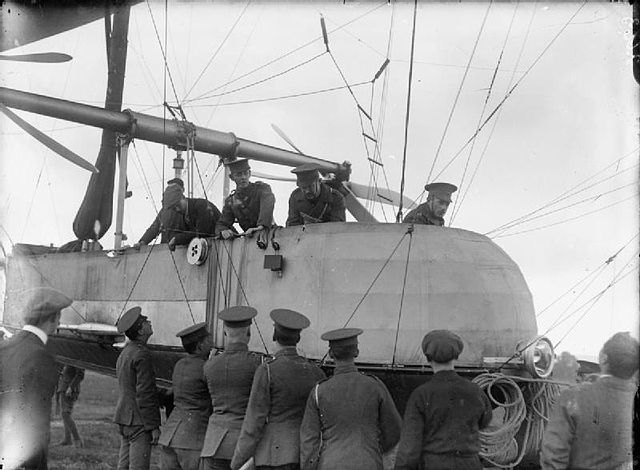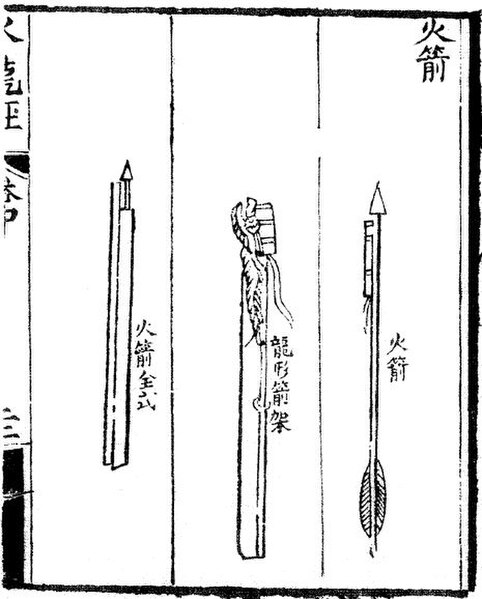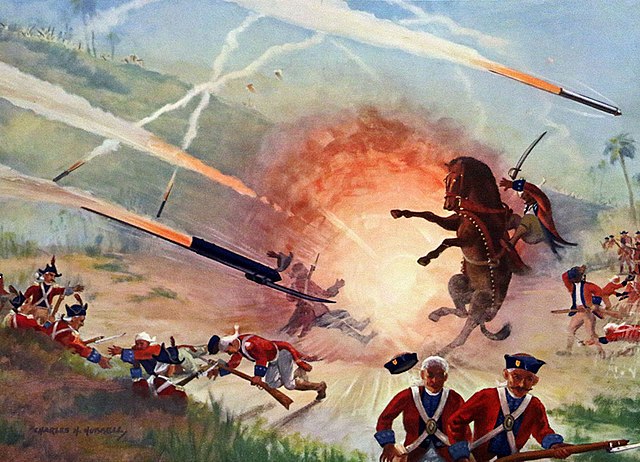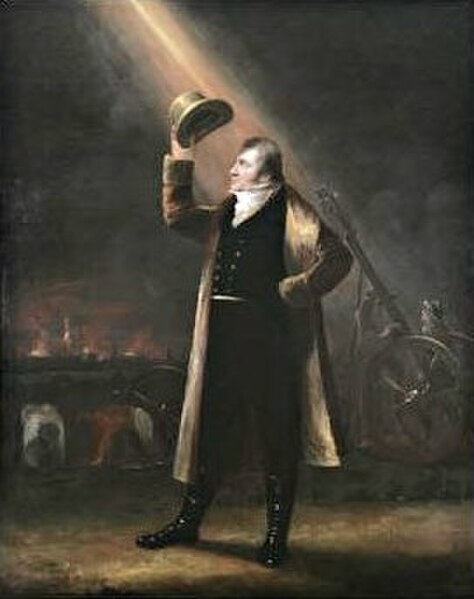Thrust vectoring, also known as thrust vector control (TVC), is the ability of an aircraft, rocket or other vehicle to manipulate the direction of the thrust from its engine(s) or motor(s) to control the attitude or angular velocity of the vehicle.
Graphite exhaust vanes on a V-2 rocket engine's nozzle
The pre-World War 1, British Army airship Delta, fitted with swiveling propellers
Three experimental thrust vectoring aircraft in flight; from left to right, F-18 HARV, X-31, and F-16 MATV
Sea Harrier FA.2 ZA195 front (cold) vector thrust nozzle
A rocket is a vehicle that uses jet propulsion to accelerate without using the surrounding air. A rocket engine produces thrust by reaction to exhaust expelled at high speed. Rocket engines work entirely from propellant carried within the vehicle; therefore a rocket can fly in the vacuum of space. Rockets work more efficiently in a vacuum and incur a loss of thrust due to the opposing pressure of the atmosphere.
A Soyuz-FG rocket launches from "Gagarin's Start" (Site 1/5), Baikonur Cosmodrome
Rocket arrows depicted in the Huolongjing: "fire arrow", "dragon-shaped arrow frame", and a "complete fire arrow"
Mysorean rockets and rocket artillery used to defeat an East India Company battalion during the Battle of Guntur
William Congreve at the bombardment of Copenhagen (1807) during the Napoleonic Wars








